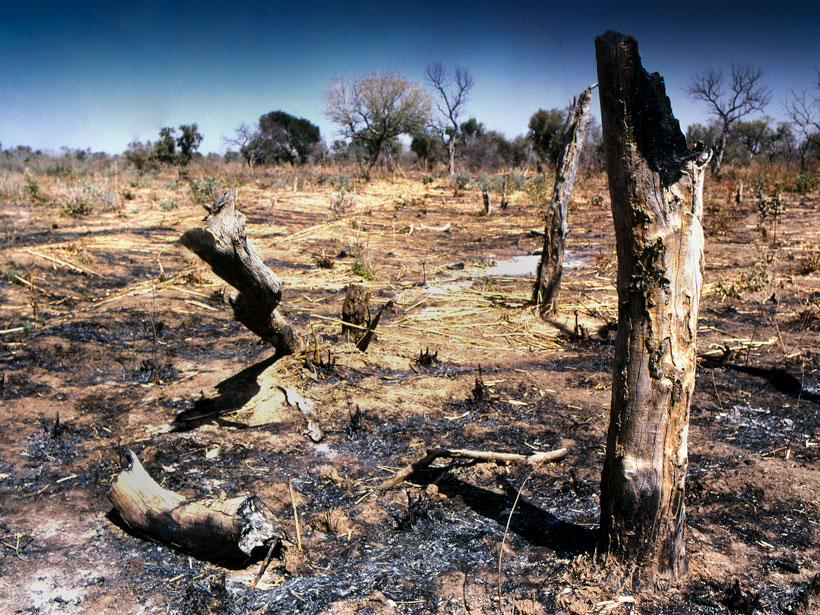Source: Paleoceanography and Paleoclimatology
The history of fire in Africa has been widely studied as a potential means of unraveling the complex interactions between biomass burning, vegetation, climate, and human activity. But previous studies have generally been limited to timescales of a few thousand years, and records of such limited duration have been unable to capture the full range of variability in the continent’s fire dynamics over glacial-interglacial timescales.
Now Schreuder et al. present a continuous, 192,000-year-long record of fire history in sub-Saharan northwest Africa. The team reconstructed the rate of accumulation of levoglucosan, a fire biomarker, from a marine sediment core extracted offshore of Guinea and sampled for organic geochemical analyses at 5-centimeter intervals.
The results indicate that after remaining relatively steady for more than 100,000 years, the rate of levoglucosan accumulation nearly doubled about 80,000 years ago. But because the sedimentation rate and the rate of accumulation of other organic compounds increased at the same time, the authors attribute this change to an overall increase in sediment accumulation rather than increased biomass burning.
The new record also contains two significant spikes in the rate of levoglucosan accumulation, at about 57,000 and 55,000 years ago, a period that roughly corresponds to the onset of marine isotope stage 3. Because the peaks don’t correlate with any observed changes in sedimentation rate, the authors ascribe them to increased biomass burning in sub-Saharan northwest Africa.
These findings suggest that changes in vegetation and regional climate did not exert a major long-term influence on the region’s fire history. The researchers attribute the two fire events to a greater abundance of C3 vegetation, combined with increased human settlement, and a resulting uptick in fire use at a time when other lines of evidence suggest the savanna became wetter and thus more hospitable to humans.
Collectively, these results suggest there is a tantalizing connection between changes in climate, vegetation, and human fire history that coincide with a major period of hominin dispersal out of Africa. According to genetic and archaeological evidence, this wave of migration occurred between about 60,000 and 40,000 years ago and set the stage for the colonization of the other continents. (Paleoceanography and Paleoclimatology, https://doi.org/10.1029/2018PA003467, 2019)
—Terri Cook, Freelance Writer
Citation:
Cook, T. (2019), A 192,000-year record of northwest African fire history, Eos, 100, https://doi.org/10.1029/2019EO118155. Published on 19 March 2019.
Text © 2019. The authors. CC BY-NC-ND 3.0
Except where otherwise noted, images are subject to copyright. Any reuse without express permission from the copyright owner is prohibited.

